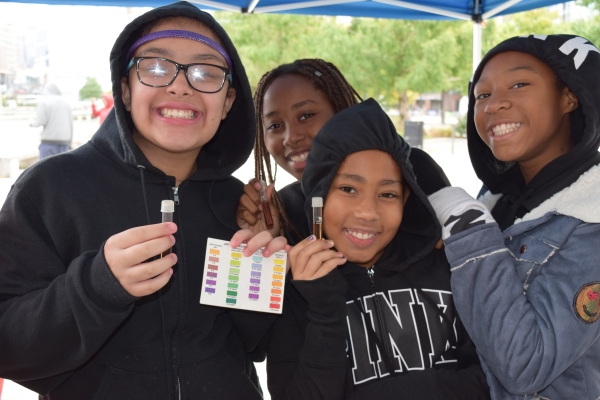How does water quality in HRPK’s 400 acres of Estuarine Sanctuary compare to the larger Hudson River? What species thrive in our marine habitat? On Tuesday, October 16, we invited local students to discover answers to questions like these as we celebrated a “Day in the Life of the Hudson and Harbor.”
During this annual event organized by the NYS Department of Environmental Conservation and the Lamont-Doherty Earth Observatory of Columbia University, thousands of students from NYC all the way to Troy, NY, collected data about the Hudson River using scientific tools, which will then be shared online, creating “snapshots” of the Hudson River at dozens of locations.

Hudson River Park once again served as a key sampling site, and this year seven NYC school groups joined us for this exciting day of hands-on data collection. Partnering with educators from the Intrepid Sea, Air and Space Museum, our HRPK Estuary Lab team hosted a group of 64 students from PS 51 in the morning at HRPK’s Pier 84. In the afternoon, 26 students from Gateway School also joined the Estuary Lab to collect a second set of data.
Students used fishing poles, water-testing kits and other scientific tools to investigate and report on river conditions including water temperature, salinity, pH, turbidity (cloudiness) and dissolved oxygen. Students also met live animals collected from fish traps in the River, including grass shrimp, blue crabs, sea squirts and oysters. The data collected from sites like ours provides valuable information about aquatic life, water chemistry, tides and the weather at each site, helping to create a bigger picture of the health and importance of the Hudson River.

Educators also encouraged students to observe their surroundings and consider how human behavior and land use can impact the natural environment. Our students inferred, for instance, how leaky boats can pollute the Hudson with oil, trash that winds up in the Hudson can be fatal to wildlife, and trees and parks are helpful in producing oxygen.
In addition to student-supported efforts such as “Day in the Life of the Hudson and Harbor,” HRPK Estuary Lab scientists continuously monitor Park water conditions to understand the estuary ecosystem and communicate its health to Park users. If you’re interested in learning more about current river conditions, take a look at the Hudson River Environmental Conditions Observation System (HRECOS) network.